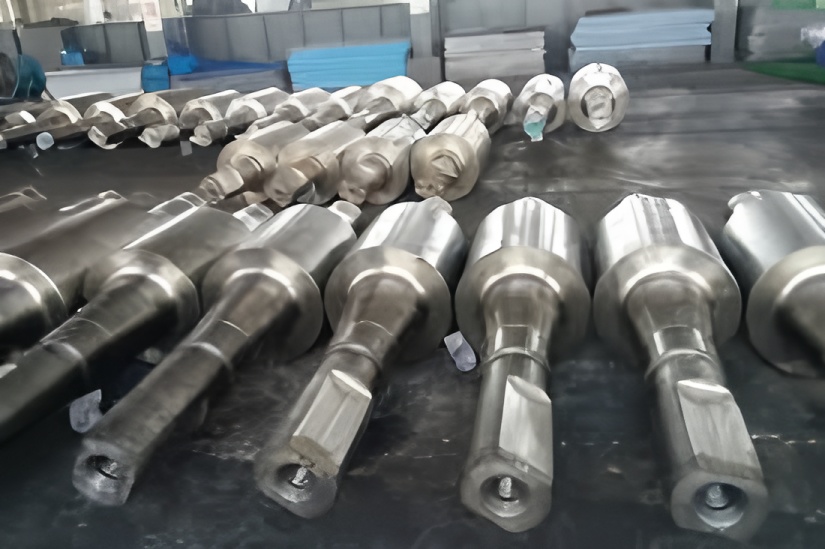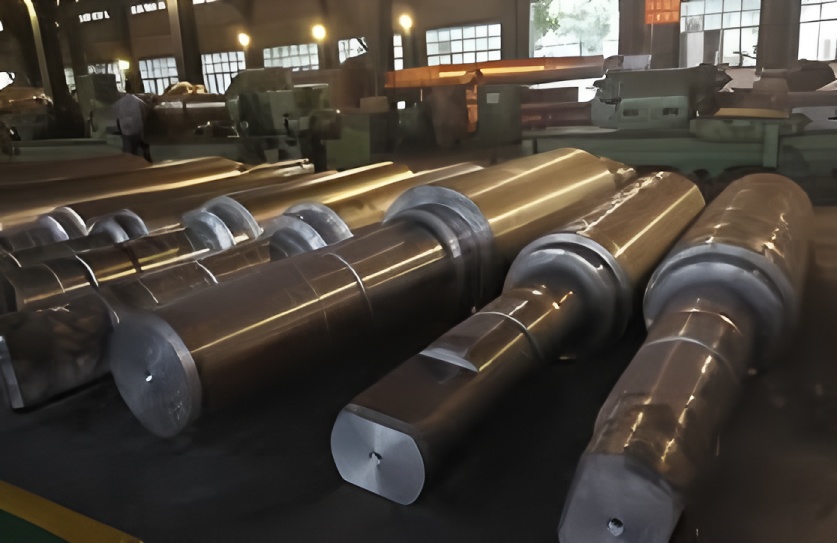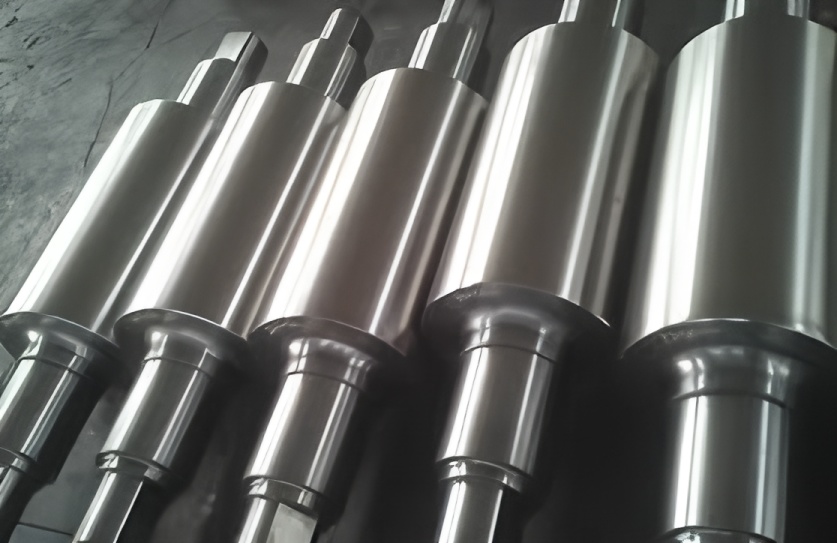This article addresses the challenges of difficult processing and low efficiency in high-speed steel roll production by examining their characteristics, tooling materials, machine tool performance, processing techniques, and practical application. It clarifies the impact of tool selection, machining technology, equipment requirements, and usage conditions on the performance of high-speed steel rolls.
Keywords: high-speed steel roll processing, HSS roll application
In the mid-1990s, China pioneered the successful development of centrifugally cast high-speed steel rolls, which were first applied in hot-rolling narrow strip mills and later extended to bar mills, high-speed wire rod mills, and spring flat steel mills.
This technology received a national invention patent in 2001. In 2005, the centrifugally cast high-speed steel roller rings developed by the company were also granted a national invention patent. The high-speed steel rolls and rings produced by HANI are now available in a wide range of specifications and varieties.
In 2001, HANI successfully developed large-scale centrifugally cast high-speed steel rolls, which were effectively applied in continuous casting, continuous rolling, and hot continuous rolling production lines. The large-scale rolls developed in 2005 have also been successfully implemented in hot continuous rolling lines, delivering excellent performance.
As an emerging specialist, HANI Roll Manufacturing Factory has focused on the research and production of high-standard, high-performance materials. Its processing technicians have extensively explored and tested machining technologies and tooling for high-speed steel rolls.

Features and Management Requirements of Rolling Mill Rolls in Plate Mills
Main Characteristics of High-Speed Steel Rolls
High-speed steel roll materials contain significant amounts of vanadium, molybdenum, tungsten, chromium, and other alloying elements. The primary carbides in the roll structure are MC and M₂C types, which offer high hardness and excellent wear resistance. These rolls also exhibit good thermal stability. Under stable rolling conditions, the roll surface maintains high hardness and wear resistance. The high hardenability ensures minimal hardness drop from the surface to the inner working layer, providing consistent wear resistance throughout. Under proper cooling, a thin, dense oxide film forms on the roll surface, enhancing wear resistance. The material’s high thermal expansion coefficient and good thermal conductivity contribute to minor wear during rolling, while self-expansion helps maintain pass shape consistency, supporting controlled negative deviation rolling.
High-Speed Steel Roll Processing Technology
Tool Material Selection
Tools used in machining high-speed steel rolls endure extreme cutting pressure, impact, and high-temperature friction. Super-hard materials such as diamond and cubic boron nitride (CBN) are typically employed. CBN tools allow cutting speeds 10–20 times higher than conventional carbide tools and achieve superior surface finish. With higher hardness, thermal stability, and chemical inertness than diamond, CBN is the preferred material for high-speed steel roll processing in steel companies.
CBN tools are available as polycrystalline compacts (CBN with binder) or composite inserts (CBN layer on carbide substrate). For high-speed steel rolls, tools with ceramic binders and ultra-fine CBN grains—such as MBN3500 and MBN5000 grades—are commonly used and have proven most effective.
Optimization of Processing Technology
For grooved high-speed steel rolls, rough machining involves significant material removal, leading to rapid tool wear. A common strategy is to pre-cut the groove profile using a blade slightly smaller than the base circle diameter, followed by CNC machining with CBN tools. Cutting parameters vary by section: depth of cut is typically 0.3–0.4 mm, speed 60–80 m/min, and feed rate 0.8 mm/r for the ring section, 0.3–0.5 mm/r for the groove arc, and 0.3–0.4 mm/r for the groove base circle during finishing.
Optimizing parameters on CNC lathes like the CK84100 has significantly reduced processing time and improved efficiency. Initially, arc-shaped cutters caused edge chipping and insufficient chamfer depth. The improved method involves rough chamfering with a pointed cylindrical tool followed by finish machining with an arc tool, ensuring better quality. For finishing, carbide tools are used for rough turning on conventional lathes before final CNC finishing, enhancing base circle smoothness and tool life.
Application of High-Speed Steel Rolls
The use of high-speed steel rolls represents a major advancement in modern steel rolling, comparable to innovations like microalloying and controlled rolling/cooling. In Japan, these rolls are widely used in plate, section, bar, and wire rod mills, serving as both work rolls and backup rolls. Their superior wear resistance stems from unique characteristics distinct from traditional rolls.
Usage Guidelines
High-speed steel rolls require clean, low-temperature cooling water with adequate pressure and flow to prevent thermal cracks, spalling, and structural phase changes. An ideal cooling system uses multiple annular nozzles to ensure continuous water coverage. Water temperature should be below 40°C, pressure maintained at 0.4–0.6 MPa, and flow rate at least 300–500 L/min, with 70–80% directed to the exit side. Cooling water must be activated before contacting hot steel to prevent thermal shock. In case of jamming or pile-ups, water cooling should continue until the roll and material cool down before removal.
Benefits of High-Speed Steel Rolls
The adoption of high-speed steel rolls reduces replacement frequency, saves time, and increases mill operational rate and output. The high hardness resists surface corrosion, reducing pitting and improving the quality of rolled products, thereby enhancing market competitiveness.

Conclusion
High-speed steel rolls offer high hardness and wear resistance. Under identical rolling conditions, they exhibit less wear than chilled iron or high-nickel-chromium iron rolls, allowing double the single-groove rolling volume and significantly improving surface quality and dimensional accuracy. Although tool material limitations have posed challenges, ongoing advancements in CBN tools—coupled with optimized processing techniques and adequate machine rigidity—are gradually reducing machining difficulties and improving efficiency. With continued improvements in cooling methods, the promotion and application of high-speed steel rolls hold broad prospects, maximizing their advantages and driving further advances in steel rolling production equipment.


